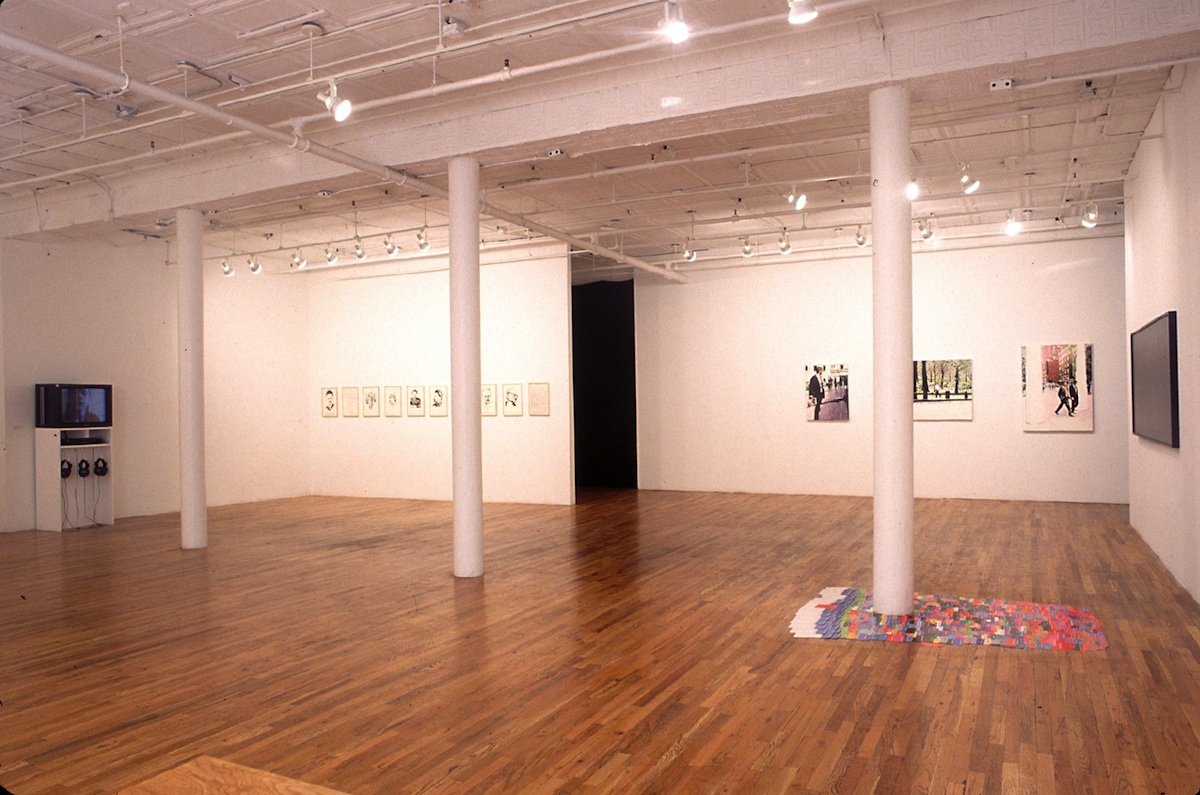September 14 – October 23, 2004
Artists: Romeo Doron Alaeff, Fernando Bryce, Zoe Crosher & Leslie Grant, Carla Herrera-Prats, Vlatka Horvat, Erik Schmidt, Lisa Tan, Hito Steyerl
September 14 – October 23, 2004
Artists: Romeo Doron Alaeff, Fernando Bryce, Zoe Crosher & Leslie Grant, Carla Herrera-Prats, Vlatka Horvat, Erik Schmidt, Lisa Tan, Hito Steyerl
Opening Reception
Tuesday, September 14, 6 - 8pm
Employing diverse documentary and narrative practices, the artists in Based on a True Story address representations of identity through the focus of individual experience. Ranging formally from strict documentary to fiction, and thematically from introspective testimonials to historical accounts, all works in the exhibition explore the narrative procedures at play in relaying first-hand knowledge. Identity is not conceived as a construct of outside forces or predetermined paths, but rather manifests itself only momentarily, through the personal experiences that form the basis of each work.
Since 1994, New York-based Romeo Doron Alaeff has produced a series of short documentary films structured around the various members of his family, collectively titled Still Life with You. In Believe (1996), Alaeff sets out to find his biological father, in Goin’ Down to Mexico (2001) he follows his brother Gabriel to Mexico, and in Works like a Dream (2003) he records a conversation with his mother under the influence of the sleeping aid Ambien. Each segment ostensibly focuses on one aspect or theme such as religion or family, while touching on a broader range of philosophical ruminations and very personal conundrums.
The Peruvian-born, Berlin-based Fernando Bryce engages narrations of historical events through the personal act of appropriation through drawing. Often compiling series of drawings, Bryce’s source material ranges from pre-revolution tourist guides on Cuba (2002), a 1958 US Army-issued pocket guide on the land South of the Border (2002), or several historical accounts of the Spanish Civil War. His South American origins and his European residence equally inform Bryce’s interest in the ways colonialism inserts itself into the written histories, and some of his projects have a distinctly autobiographical approach.
Los Angeles-based Zoe Crosher and New York-based Leslie Grant collaborated to work with the found photo archive that forms the basis of Michelle du Bois (2004). Drawing from the personal photo album of a seemingly typical American woman living in the 1960s and 1970s, the work juxtaposes benign tourist photographs and images linked to her job as a prostitute, introducing an inconsistency of expectation that resonates with the viewer’s likely preconceptions.
For her work Transactions (2003), Carla Herrera-Prats conducted interviews with seven Mexican students who studied in the U.S., drawing on her own experience as a student at the California Institute of Arts. Presented in Spanish with English subtitles, Transactions engages questions of educational migration and cultural translation from a personal perspective but with broad and much more resonant consequences.
Vlatka Horvat’s work often originates from simple performative gestures that function as instructions for the individual piece. Coming from a tradition of minimalist performance-based work, the works in the exhibition follow two distinct trajectories. In Oaths and Partisan Songs from Memory (2002), Horvat tries to remember the instructional and propagandist songs and sayings of her Croatian upbringing, while Similar to the Experience (2003/2004) focuses on the linguistic capacities to narrate experience. Consisting of pencil tracings of printed sentences found on the Internet, all containing the phrase “similar to the experience of,” the work exposes the attempts we all make to convey personal experiences in a seemingly neutral or general fashion.
Berlin-based Erik Schmidt has long based his work on the conflation of his immediate surroundings and the desires and representations often associated with the role of the artist. In staged home story-like magazine spreads and postcard series, Schmidt has purported an image of himself as celebrity artist, and short videos have chronicled his adventures parking his car in the city. For Suitwatchers Anonymous (2003), Schmidt has assumed the personas of several suitwearing professionals—a male group he also regularly paints—acting out fantasies that range from dreamily surreal to downright violent.
Lisa Tan’s works are always directly motivated by personal experiences, encounters, or desires, which are subsequently worked through with great conceptual rigor and elegance. Her ongoing series Letters from Dr. Bamberger (2002-) uses short letters Tan received from her General Physician after every annual check-up, a gesture at once an intimately personal and generic, and resonant of the conceptual practice of Felix Gonzales-Torres. Her work The Garden of Earthly Delights (2004) originates in the premise of a perfect travel, which for Tan would consist of a journey to see every Hieronymus Bosch painting accessible in a public or private collection. As the proposed journey unravels, however, not only its realization but also the promise of its bliss become increasingly untenable.
In her films and videos, Hito Steyerl is concerned as much with the contents of political critique as with the forms, strategies, and representations of critique. November (2004) ostensibly focuses on Andrea Wolf, a German woman who was Steyerl’s high school friend and who later in her life associated with various radical political groups and whose death is claimed to have been ordered by the Turkish government due to her participation in the Kurdish resistance. Narrated from Steyerl’s perspective, the film is both a search for a lost friend, and a document of the making of a political martyr and its flipside, terrorism.
